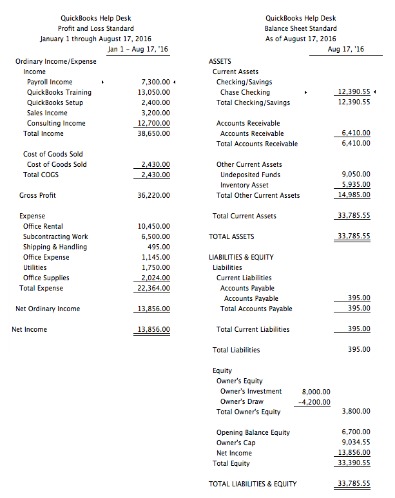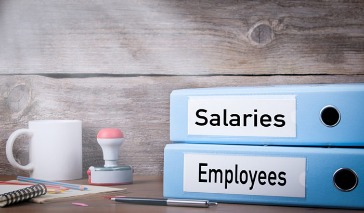Content
- How Business Owners Pay Themselves
- How Much To Take From Your Business
- S Corporation Owners Who Work In The Business Get A Salary
- Are Pets Tax Deductible?
- Partners Take Distributions From Profits
A sole proprietor’s equity balance is increased by capital contributions and business profits, and is reduced by owner’s draws and business losses. An owner’s draw refers to an owner taking funds out of the business for personal use.All profit goes to you as the sole proprietor, but you are also personally liable for any losses. Draws can be a fixed amount paid at regular times or can be taken as needed. As the business owner, you have the discretion on when to take draws. But, because no taxes are withheld or remitted to the IRS, you’ll need to keep tabs on where that cash flow is going and make quarterly payments or settle up at the end of the year.However, there are other factors to consider, such as how you’ll be taxed. For example, if you run a partnership, you can’t pay yourself a salary because you technically can’t be both a partner and employee. While partners often split income evenly, that doesn’t have to be the case so you can arrange a different income draw based on your partnership agreement.

Many small business owners compensate themselves using a draw, rather than paying themselves a salary. To avoid underpayment penalties, you may need to make quarterly estimated tax payments to the IRS, considering both federal income tax and self-employment tax you owe. A single-owner LLC is treated by default as a sole proprietorship for federal tax purposes, and a multiple-owner LLC is treated by default as a partnership. However, the owner or owners of an LLC may choose to have it treated as an S corporation or a C corporation. The IRS does not permit owners of a sole proprietorship or partnership to pay themselves a salary as an employee of the business.
How Business Owners Pay Themselves
Assets include money invested in the business and the business’s profits. Liabilities refer to any debt owed by the business and money taken out of the business, such as an owner’s draw.
- Unlike a C corp, S corps don’t usually make general dividend distributions.
- Later in your business life, you may be able to take money from your business on a more regular basis, based on your personal financial situation.
- If you’re a sole proprietor, it’s all coming from one big pot, but if you’re an LLC, intermingling your business and personal finances can mean losing your limited liability status.
- An owner’s draw is when an owner of a sole proprietorship, partnership or limited liability company takes money from their business for personal use.
- Intuit Inc. does not warrant that the material contained herein will continue to be accurate nor that it is completely free of errors when published.
Use this article as your guide to determine whether you should take a salary or a draw, as well as how much you should reasonably pay yourself. Maybe you’ve made the decision between a salary and a draw, but now you’re not sure how much you should be taking out of the business for yourself. Online payroll services will help you keep your payroll tax documents organized. Choosing the right provider, one that supplies expert support, will be key in assisting with any tax confusion or compliance issues.Fear of failure and a lack of support or delegation can lead business owners to work more than their employees. When a traditional salary doesn’t match their ever-changing job responsibilities, many seek a more flexible option. Owner’s draws, also known as “personal draws” or “draws,” allow business owners to withdraw money as needed and as profit allows. Some S Corporation owners sneakily take draws instead of salaries to avoid paying payroll taxes. This has caused increased IRS scrutiny of S Corporations over the past several years.
How Much To Take From Your Business
The owner decides a set wage for themself and collects that check every pay period. Guaranteed payments are a fixed amount mirroring a salary, prevalent in partnerships. They can help you securely plan for your future each year, even if the business is in the red. Your books need to be up to date so you know your equity balance and ownership interest value. Your equity balance is the total of your financial contributions to the business along with the accumulation of profits, losses and liabilities.Nonemployee owners can still take draws and receive shareholder distributions. For the purposes of the PPP program, owner’s draws are not included as payroll costs. Instead, your payroll costs include only the earnings you are taxed on. Since owner’s draws are not taxed, they are not considered payroll and not covered by the PPP loan program. One of the frequently overlooked business accounts is the owner’s equity account. Owner’s equity is a line on your balance sheet representing the owner’s claim to business assets. By default, they’re classified as a partnership, so they must use an owner’s draw.
S Corporation Owners Who Work In The Business Get A Salary
Incorrectly reported payroll taxes can result in expensive IRS penalties and interest, one of the largest financial risks to business owners. The cost of getting caught is far higher than the payroll tax savings you might have saved. A shareholder distribution is a payment from the S corp’s earnings taxed at the shareholder level. In other words, shareholder distributions are not recorded as personal income or subject to Social Security or Medicare taxes. If you pay yourself a salary, like any other employee, all federal, state, Social Security, and Medicare taxes will be automatically taken out of your paycheck. Because your company is paying half of your Social Security and Medicare taxes, you’ll only pay 7.65% ‒ half what you’ll pay if you take an owner’s draw.

Since Patty is the only owner, her owner’s equity account increases by $30,000 to $80,000. The $30,000 profit is also posted as income on Patty’s personal income tax return. Owners of limited liability companies (called “members”) are not considered employees and do not take a salary as an employee.
Are Pets Tax Deductible?
Otherwise, you risk the IRS reclassifying these “loans” to dividends or salary. The major difference from an S-corp is that a C-corp usually should not allow owners to take draws. Since the C-corp is typically owned by shareholders, the earnings of the C-corp are “owned” by the company. She doesn’t pay separate taxes on the owner’s draw because she’s simply taking out money that has been taxed in the past or money that will be taxed in the current year. If you run a corporation or NFP, you have to assign yourself a reasonable salary. The IRS determines what is and isn’t reasonable salaries for CEOs and non-profit founders in order to prevent certain tax benefits from being exploited. As we mentioned earlier, you can determine what a reasonable wage is by comparing your earnings to CEOs in similar positions.Single-member LLC owners are considered to be sole proprietors for tax purposes, so they take a draw like a sole proprietor. Multiple-member LLC members are considered to be like partners in a partnership, so they take a distribution.Both salaries and payroll taxes can be classified as business expenses and deducted from your business’s taxes. Paying yourself a salary is beneficial because it can reduce your business’s net income. S Corporation owners can take a salary plus they can also take draws. Like a C Corporation, the salary would be paid only if the owner worked for the business and would be taxed like normal employee compensation. If the owner didn’t work for the business, though, they’d receive shareholder dividends instead of a salary. Business owners can receive either a salary or a draw from their businesses depending on the structure, expenses, profits, and reasonable compensation guidelines for their geographic area. Owner’s equity refers to what you’ve invested in the company, whether that’s your own personal money or your time.
Can a partner draw a salary?
Much like sole proprietors, partners in a partnership must use the draw method to pay themselves. The IRS doesn’t consider partners employees of a partnership. Therefore, you are unable to pay yourself a salary. You will be taxed like a sole proprietor for your percentage of the partnership’s income.On the other hand, a payroll salary offers more stability and less planning at the expense of less flexibility. Let’s say our friend Charlie decides to pay himself on a payroll salary. Taxes will be taken out automatically and his compensation will be consistent. Need payroll software that can meet the unique needs of your business? See our review of Paychex or our ADP review for more information on how payroll software could improve your business’s finances. A balance sheet is essential if you take multiple draws, or draws in different amounts. The software will automatically track each draw, so it is easy to monitor your spending.
How To Track And Record Your Draws
Just keep in mind that you are responsible for paying your own taxes on this draw, which is considered taxable income. While a distribution is one option with an S corp, many business owners opt to take an owner’s salary, which is taxed like any other payroll. Some opt to take both a distribution and reasonable compensation in the form of salary to balance the amount of taxes they owe at the end of the year. If you’re an owner who’s actively involved in managing your S corp, you’re considered an employee of the company and you’ll pay yourself a W-2 salary. You can still draw from the business account and receive shareholder distributions, but neither of these should replace an actual salary. A normal balance for an equity account is a credit balance, so Patty’s owner equity account has a beginning balance of $50,000.Remember, the IRS has guidelines that define what a reasonable salary is, based on work experience and job responsibilities. State and federal personal income taxes are automatically deducted from your paycheck. On the personal side, earning a set salary also shows a steady source of income (which will come in handy when applying for a mortgage or anything else credit-related). In addition, S corporation shareholders may take additional distributions of profit from the business.